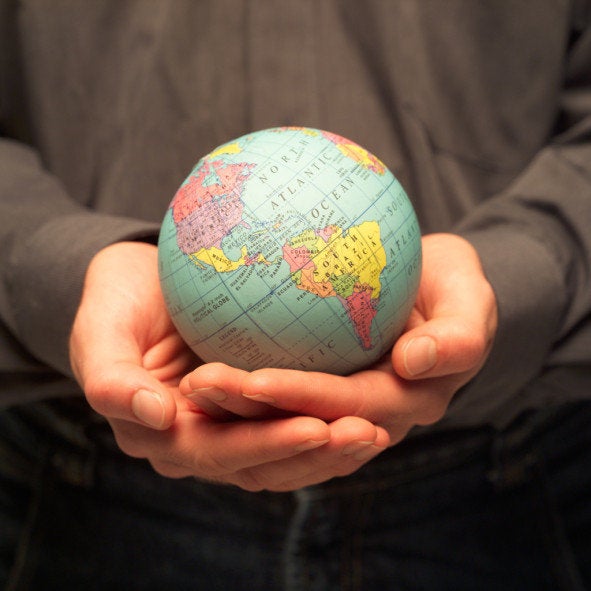
Often in yoga classes, or in what's sometimes called "New Age spirituality," people talk about how "all is one." Maybe you've heard this a thousand times and have not given it much thought. Or, who knows, maybe each time you chant "om" you're inspired anew by it. Either way, this simple aphorism has a long history and many real-world applications.
Historically speaking, "all is one" goes back to the Upanishads, sacred scriptures of Hinduism that date back 2,100 to 2,600 years. Behind the many masks of gods and goddesses, people and nature, subject and object, this tradition taught that everything is actually one reality. Most importantly, atman, the "you" that lies behind all your personalities and societal roles, is the same as brahman -- everything "out there."
For millennia, this was a central, but somewhat esoteric, teaching in Hindu philosophical schools. Most of Hindu religion (the terms "Hindu" and "religion" are both Western, and thus somewhat inaccurate) was and is devotional, not contemplative. But for the elites, the notion that the separate self is not actually separate was central. You may seem to be you, but really you're God doing the dance of you.
In the late 19th century, these ideas began to filter into the Western consciousness. Thanks to Emerson, they animated much of American transcendentalism. Thanks to the Indian sage Vivekananda, they became widely known, and studied in the academy. Resonances were found in the mystical traditions of Christianity, Judaism, Buddhism and Islam, all of which had variations on the same theme. And eventually, these very old ideas filtered down through the 1950s and 1960s, right into your local yoga studio. "Namaste," you might say in greeting -- a simple hello, but one which means, on the esoteric level, that the God in me sees the God in you, and we see that we are one.
These days, people like to deride New Age spirituality as being self-absorbed and a little childish. Okay, so it feels good to say "all is one" in the yoga studio. But during the other hours of the day, aren't we all behaving as if it's you versus me, in a dog-eat-dog world?
It doesn't have to be this way, and I'd like to share just one example, which I call the case of UNE -- Unreasonable Negative Energy. I don't mean anything mystical by "energy"; for me, UNE is simply a cute name for anytime I think someone's being a schmuck. It could be the guy who cuts me off in traffic, or it could be more serious. Recently, for example, a religious fundamentalist told me that my love for my (male) fiancé is the same as the lust someone might feel for a sheep, or a goat. This is what I mean by UNE.
When I'm confronted with UNE, I try to really depersonalize it as much as possible. This is where "all is one" comes in. Our conventional view of the world is that this fundamentalist guy is being a jerk, or saying something offensive, and my ego would like very much to tell him to go to hell. But what's really going on in that moment is a series of cause and effect reactions leading to UNE. It's not about "me," and it's not even about the person saying or doing the offensive thing. An instance of UNE is like a plant growing in a certain way. It's cause and effect only. That is what's really happening.
Moreover, UNE is a sign of the opportunity we each have to shift from negative to positive. In the case of the fundamentalist's comments, it gave me an opportunity to go back on message, which at that moment was about sharing my own personal experience. So, for myself, when UNE arises, I shift back, out of being invested in the content of the conversation, and into a wider view. Of course, UNE often comes clothed with offensive language or content, but it's UNE first, content distant second. The content is not really what's going on, or causing an emotional reaction. It's something else.
Finally, for me, that wider view involves settling back into awareness: Whatever clouds are thundering across the sky right now, the sky is still there; you're still looking out through your eyes, still breathing. And it's possible to identify more with the sky than the clouds. If you want to translate this into God-language, feel free. But the point of "all is one" is that the UNE -- you, me, this article, and everything else -- are like waves on the ocean. Yes, they are waves, and they differ from one another in various ways. But essentially, they are water -- not merely "connected," but actually all the same stuff.
In this way, I have found, the esoteric concept that everything is God trickles directly down into everyday experience. Like it or not, each of us is a different flower on the same plant. Our differences are important, but they are also not what is ultimately real about each of us. The separate self is an illusion, and what is found when it is shed is at once practical and sublime.